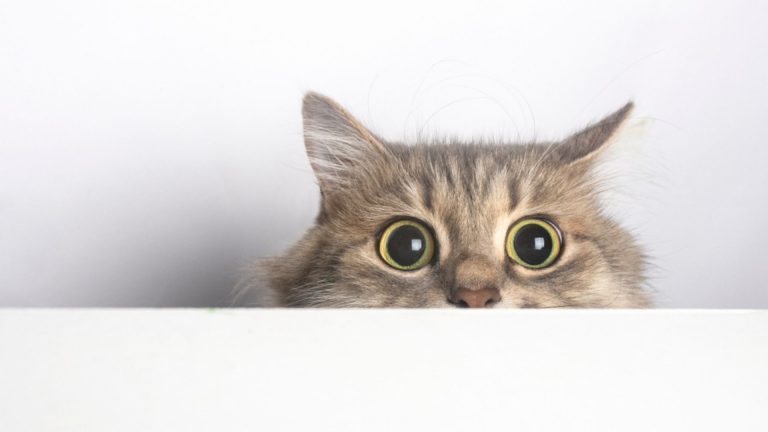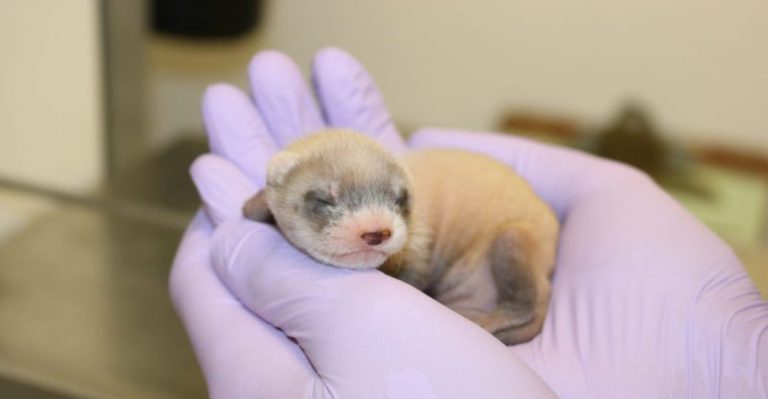Why Has My Cat’s Fur Gone Lumpy? 12 Potential Causes
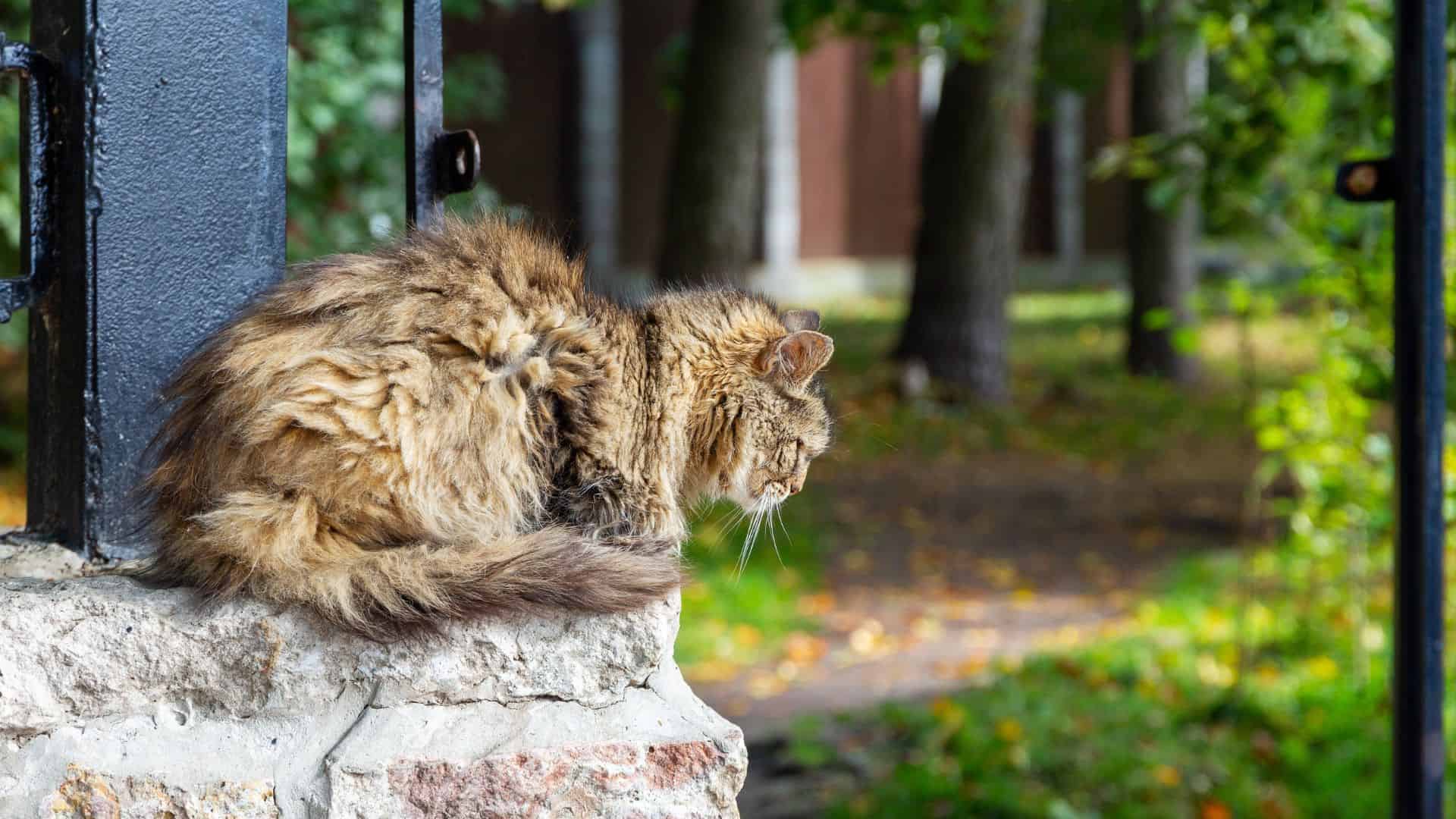
Have you been petting your kitty and noticed its coat is not smooth and shiny but lumpy and dull? That’s not how your cat’s fur is supposed to be.
However, you’re not the only one, as many cat owners experience their kitty’s fur becoming lumpy.
I’m sure you’re wondering, Why has my cat’s fur gone lumpy? In this article, I’ll explain the 12 most probable causes of your cat’s change in appearance and what you can do to de-mat it and prevent it from happening again.
Why Has My Cat’s Fur Gone Lumpy?

Lumpy cat fur is observable to the naked eye and can be felt by going over the fur with your fingers. But why do these areas of lumpy fur even exist?
Self-grooming is a cat’s instinctive behavior, and cats of all breeds and ages do it. Cats spend a considerable amount of time doing this, and they do it daily. While self-grooming, a cat evenly distributes the oils produced by the cat’s skin.
When the buildup of natural oils is not evenly redistributed due to the lack of self-grooming, the cat’s fur becomes greasy, dirty, and lumpy.
Hairs naturally shedded cannot fall out as they become trapped within the lumps. And that’s how mats and matted fur is formed.
Areas most commonly affected are areas with a lot of friction (where a lot of movement happens), such as the area between the legs, around the collar, and underneath the chest.
Although cats are professionals at self-grooming, sometimes they stop self-grooming. Why would that happen? I will go over all potential reasons in the section below!
12 Potential Causes Of Lumpy Cat Fur Explained
Considering there is no single answer to What’s causing my cat’s lumpy fur, I have dedicated a section to each of the most common causes of lumpy cat fur.
Mind you; these potential causes are in no particular order, so the first cause is not necessarily the most probable one, etc.
Let’s get started.
1. Lack Of Self-Grooming Caused By Fur Tasting Bad

When cats self-groom, they can taste whatever is on their fur. That can be, for example, flea and tick topical solution that you have applied on the cat’s skin.
If your cat tastes the product on its fur, and the taste is rather unpleasant, it may stop self-grooming at that site to avoid the taste.
You might be aware that tick and flea products taste bitter, and felines do not like bitter tastes in their mouth. Bitter flavors can cause cats to over-salivate and feel nauseous.
If this is the reason behind your cat’s lack of self-grooming, you only need to detangle the lumps, and there is nothing to worry about!
2. Lack Of Self-Grooming Due To Dental Pain
Self-grooming requires a cat to use its entire mouth. Therefore, if the mouth is the source of pain, self-grooming can be painful for your kitty.
For example, it can be that your cat is suffering from gingivitis (gum disease), periodontitis (gum infection) or glossitis (tongue inflammation), apart from other potential dental diseases.
Apart from the lack of self-grooming, symptoms your cat might be experiencing dental issues are;
• bad breath,
• red gums,
• tongue ulcers,
• eating less than usual,
• drooling while eating.
3. Lack Of Self-Grooming Due To A Less-Obvious Disease
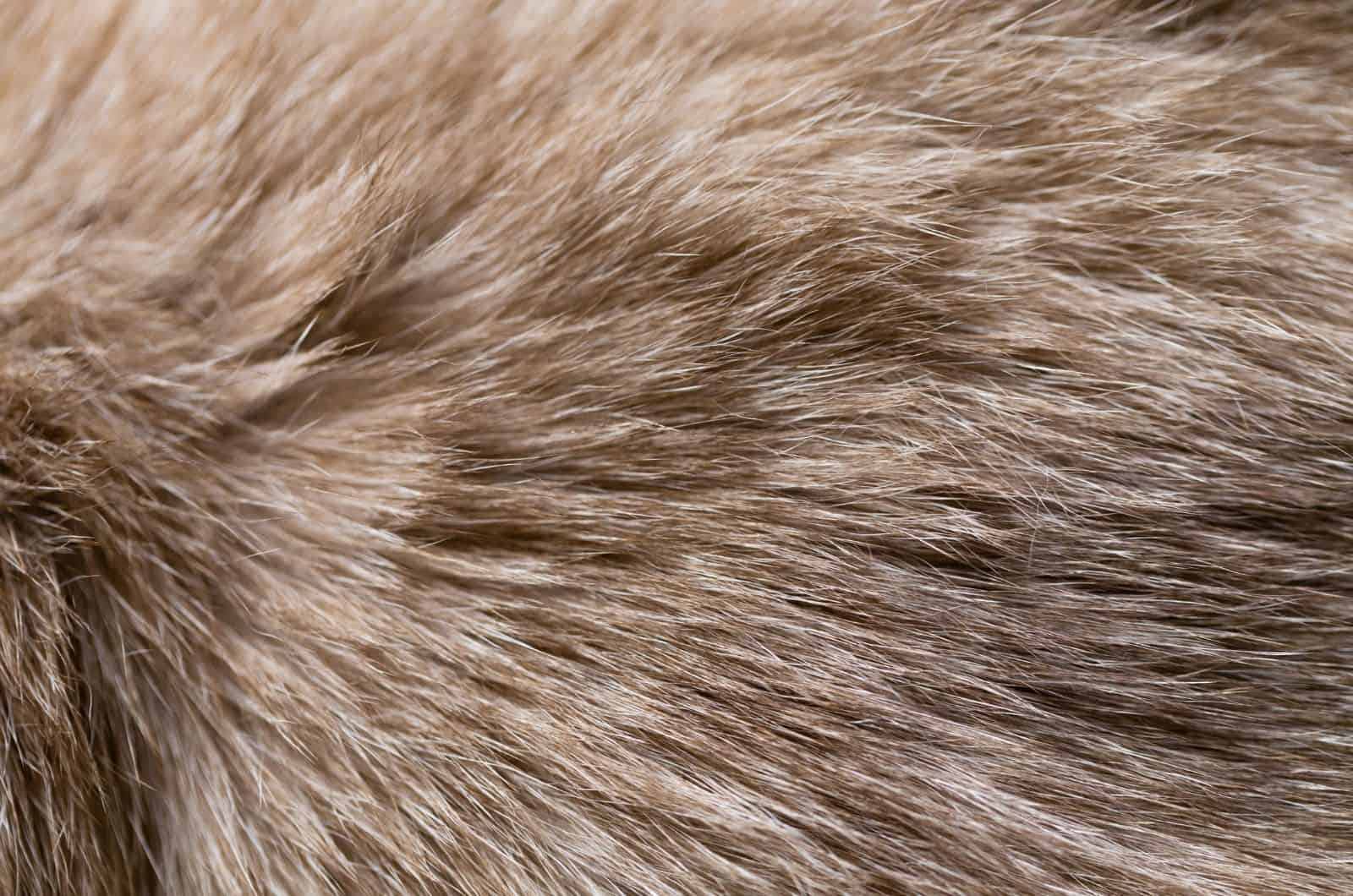
Symptoms of an underlying disease can manifest themselves on the cat’s coat. What do I mean by that? Imagine a cat’s fur being the tip of the iceberg, with the lumpy fur only being an indicator of a more serious health issue you cannot physically see.
Diseases whose symptoms can manifest on the cat’s fur are:
• liver disease,
• kidney disease,
• gastrointestinal disease,
• diabetes,
• tumor and cancer.
If you cannot pinpoint what is causing your cat’s lack of grooming, you should take your cat to the vet. They will perform a thorough physical exam, bloodwork, and urinalysis to investigate any potential disease that might be causing your cat’s health to deteriorate.
4. Lack Of Self-Grooming Due To Obesity
Obesity can prevent your cat from self-grooming, and this is especially common in senior cats.
Cats naturally become less energetic as they age. The cat is less interested in exploring and climbing trees and prefers to settle in a calm spot and nap all day.
All of this is normal with aging, but you still need to keep an eye on your senior cat’s weight. Weight gain is unavoidable if your cat consumes the same amount of calories but moves less.
Additionally, an overweight cat could be physically unable to reach some areas of its body.
Cats in good health are agile and can bend their bodies into a variety of positions, and this is impossible if there is excess body fat. A cat’s fur will grow oily and clumpy in difficult-to-reach areas.
If your cat is overweight, you should limit its caloric intake to promote weight loss. The heart and joints of cats are put under strain by obesity. Additionally, the risk of feline diabetes increases. Therefore, you should devote time to ensuring your cat is losing weight.
5. Lack Of Self-Grooming Due To Arthritis
Osteoarthritis is a painful condition characterized by inflammation and degeneration of a cat’s joints. Senior cats are especially prone to it; unfortunately, it cannot be prevented.
Symptoms your cat might be suffering from arthritis are:
• having difficulty walking,
• reluctance to go up and down the stairs,
• not jumping,
• aggression when touched, etc.
Arthritic cats experience considerable pain, especially if the disease has progressed. The pain leaves the cat unwilling to move around and self-groom.
Due to the lack of self-grooming, you might notice your cat getting greasy fur, which eventually leads to lump formation and matting.
After confirming the diagnosis with a vet, you can start symptomatic care and devote extra time to grooming your cat yourself.
6. Lack Of Self-Grooming Due To Depression
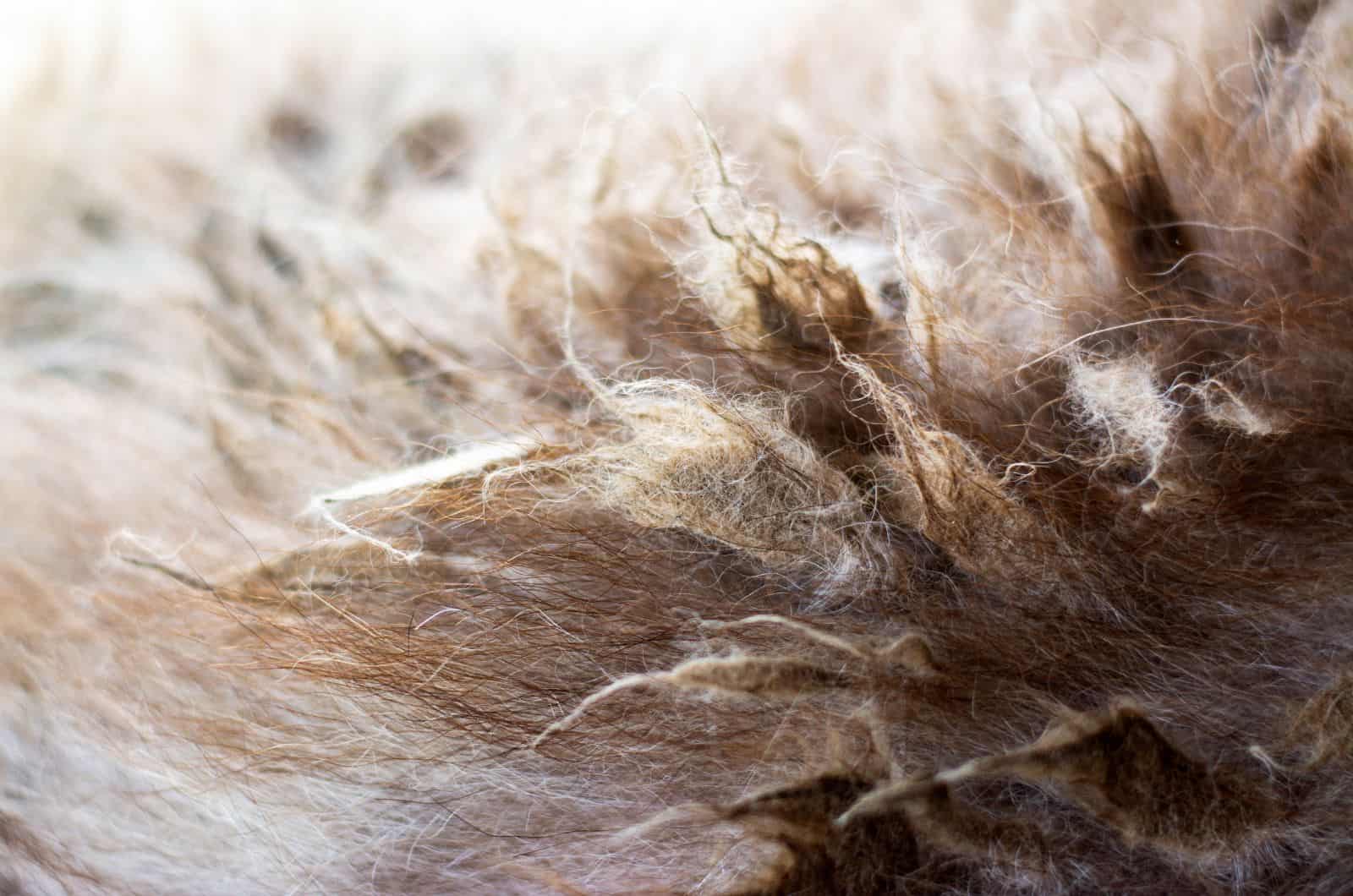
Another potential cause of a lack of self-grooming, which leads to lumpy fur in cats, is that the cat is depressed. PetMD states that cats can get depressed, especially when they lose a family member, move into a new home (meaning the loss of previous territory), changes to their health, etc.
Signs of feline depression are:
• change in personality,
• loss of appetite,
• lack of interest in playing,
• sleeping a lot,
• excessive meowing,
• lack of self-grooming, etc.
Some even say the primary warning sign a cat is depressed is the lack of grooming. Lack of grooming leads to excessively oily fur, which traps dirt and shed hair, leading to lumps and mats forming.
If you’re aware that your cat has undergone a major life change and is showing the symptoms mentioned, it’s possible it is depressed. In this case, you should take your cat to the vet, and he will guide you in proper pet care.
7. Lack Of Self-Grooming Due To Fungal Infection
Stress, illness, and a weakened immune system make cats more susceptible to developing fungal infections. Most healthy cats have robust immune systems to fight off fungal infections, but when vulnerable, fungi can enter the skin’s ordinarily protective barrier.
Skin infections and respiratory illnesses are just a few of the problems that fungi can cause, and one of the most common fungal infections is ringworm (don’t be fooled by the name, this is a fungus, not an actual worm).
These fungi consume the keratin in a cat’s fur as food. The result is oily and darkened fur, which leads to lumps and mats, and the cat’s hair also starts to fall out in clumps.
Symptoms of ringworm infection are:
• circular patches of hair loss,
• stubby fur,
• red and crusty skin,
• change in hair color,
• dandruff,
• excessive grooming, etc.
If you notice any of these symptoms, you must take your cat to the vet. After proper care, your cat’s fur will grow back, and your cat will have its healthy coat back again as soon as the infection is cleared.
8. Lack Of Self-Grooming Due To Bad Diet
Most feral cats have dandruff-filled coats that are filthy and clumpy, partly caused by poor diet.
Poor-quality fur will result from a cat’s diet lacking the proper nourishment. Typical diet-associated issues are lack of meat-derived protein, lack of high-quality fats, or high amounts of sugar and carbohydrates.
Check the nutritional content of your cat’s diet if its fur is clumpy or oily. The influence of a bad diet on the appearance of the coat is more easily observable in senior cats. Age-appropriate nutrition becomes more crucial as a cat ages, and different dietary requirements apply to older cats.
Therefore, the lack of proper diet can cause your cat’s lumpy fur, and it’s best to talk to your cat’s veterinarian about it.
9. Lack Of Self-Grooming Due To Cognitive Dysfunction
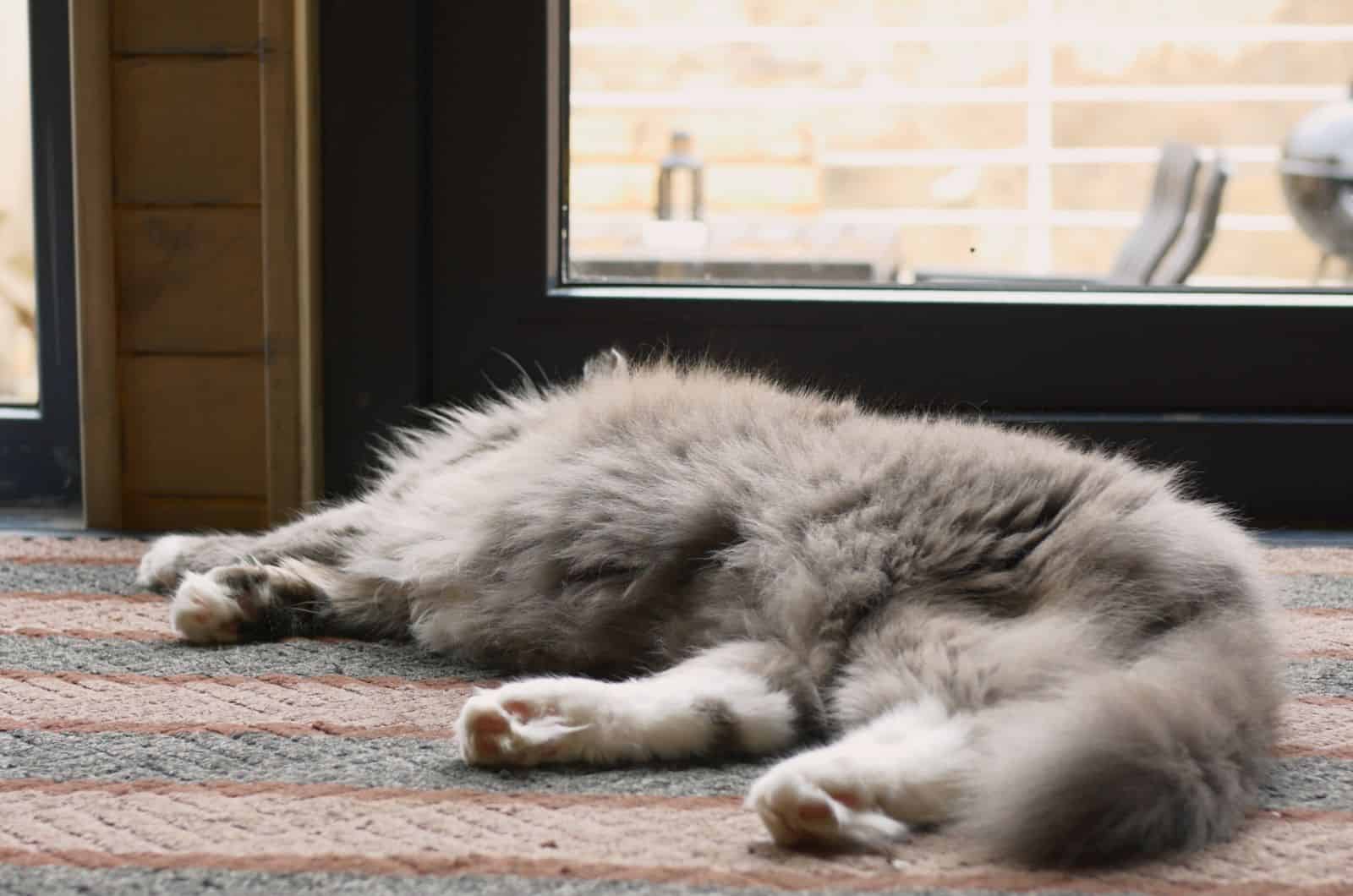
Feline cognitive dysfunction is a progressively disabling condition with symptoms similar to Alzheimer’s disease and dementia in humans. Cats 10 years or older tend to have apparent behavioral signs of cognitive impairment.
The symptoms include:
• spatial disorientation,
• prolonged periods of staring blankly into space or at walls,
• excessive sleeping,
• losing interest in playing,
• loud vocalizing, etc.
ASPCA also lists a lack of self-grooming as one of many symptoms of feline cognitive dysfunction. Therefore, never think of oily and clumpy fur as the result of laziness.
Always investigate what might be causing your cat’s lack of self-grooming, and most of the time, you will find the underlying cause.
10. Lack Of Self-Grooming Due To Seborrhea
In seborrhea, the sebaceous glands of the skin overproduce sebum, resulting in scaly, flaky, itchy, and red skin, usually affecting the back, face, and flanks. Cats with seborrhea have greasy, matted coats and more dandruff than usual.
Primary seborrhea is a genetic condition that affects some purebred cats, such as the Persian. The term “secondary seborrhea” is used for cats who get this skin problem due to another illness.
The severity and precise nature of your cat’s disease will determine the prognosis for seborrhea. If an underlying reason is found and treated, the outlook is better. To assist you in managing this frequent and often upsetting ailment, your veterinarian will review a diagnosis and treatment plan for your cat.
11. Lack Of Self-Grooming Due To Hyperthyroidism
According to Cornell Feline Health Center “hyperthyroidism is caused by an increase in production of thyroid hormones (known as T3 and T4) from an enlarged thyroid gland in a cat’s neck.”
Symptoms of feline hyperthyroidism are:
• weight loss,
• increased heart rate,
• increased thirst,
• diarrhea and vomiting,
• excessive vocalization,
• poor hair coat.
Luckily, this condition can be treated. If you notice any of the mentioned symptoms, you should take your cat to the veterinarian, who will potentially confirm the diagnosis and explain the treatment options.
12. Lack Of Self-Grooming Due To A Parasitic Infestation
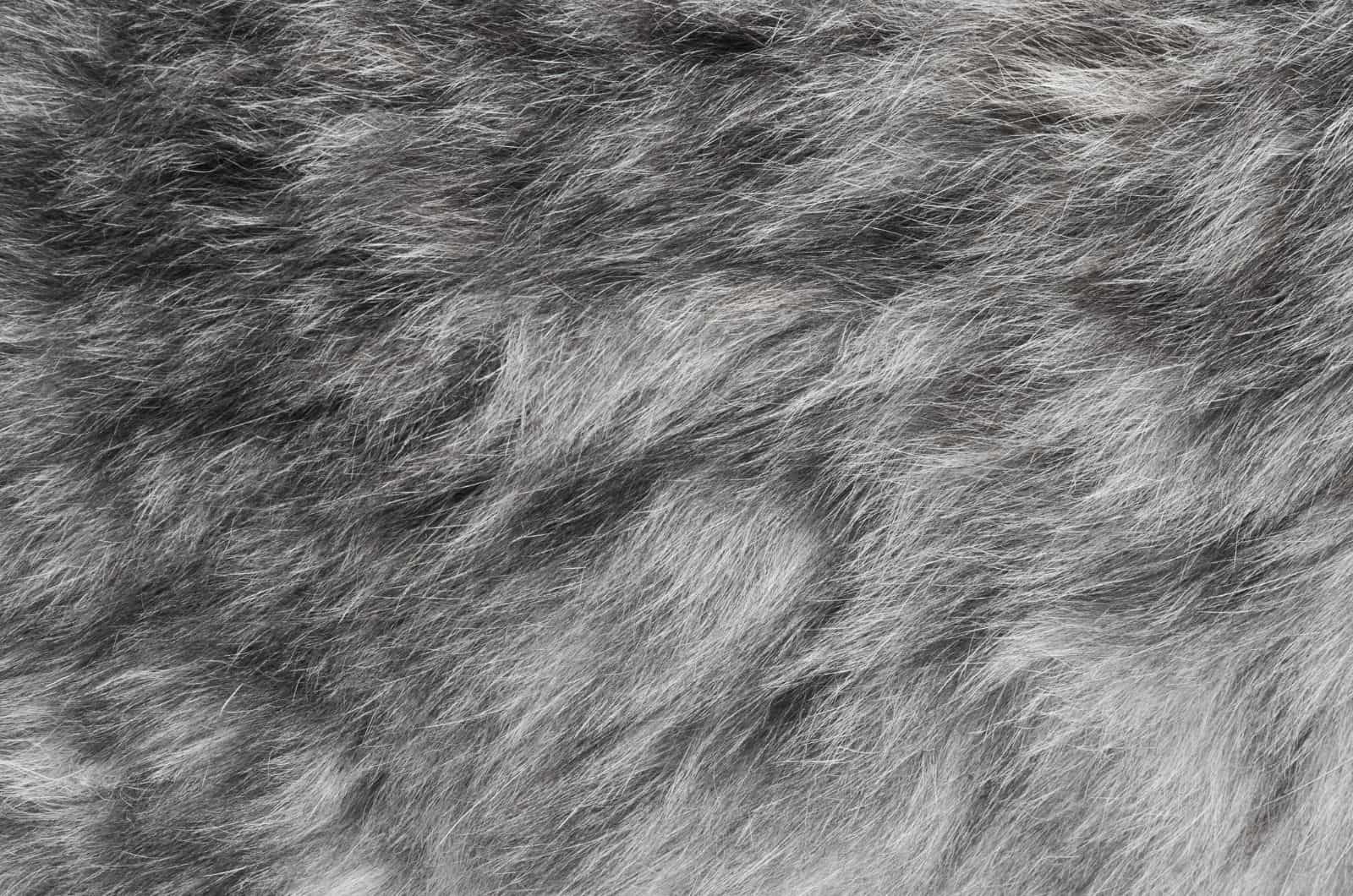
Your cat’s fur quality will suffer if fleas and mites infest it. These parasites irritate cats’ skin when they cling to it, and to stop itching, the cat will nearly always bite and scratch at the fur. This will make the fur look less shiny and nice.
Signs your cat might have a parasitic infestation in its fur are:
• dull coat,
• hair falling out,
• poor appetite,
• fever,
• weight loss, etc.
Additionally, parasites can result in secondary health issues, so it’s recommended to start treating parasitic infections as soon as possible. Luckily, parasitic infestations are treatable, and most cats get rid of them successfully.
Is My Cat Experiencing Any Pain?
Matting is painful for cats, but you need to consider the severity of the matting. One or two knots will not cause your cat significant discomfort or pain, but many knots will.
On your cat’s skin, mats eventually grow itchy, which can cause swelling, irritation, and even infection. Additionally, the matting causes tightening of the fur, thereby limiting your cat’s range of motion.
As knots tighten, they cause discomfort and serious health risks for your cat; matted fur gets more bothersome and painful the longer it is ignored.
It’s crucial to ensure your cat is getting the proper grooming and that fur matting isn’t developing into a huge problem.
Is Having Lumpy Fur Somehow Dangerous For My Cat?
Having lumpy and matted fur is not so much dangerous as it is uncomfortable and painful for your cat. These lumps tug on your cat’s skin, leading to irritated skin. They also trap dirt, moisture, and bacteria, which can lead to an infection.
There is also a chance your cat’s poor grooming habits are a sign of an underlying health issue. In this case, the fur lumps are not a medical problem but a manifestation of a medical problem.
Therefore, if you notice your cat has stopped self-grooming without an apparent reason, I urge you to take your cat to the veterinarian and find the cause of your cat’s change in grooming habits.
How Can I Remove Lumps From My Cat’s Fur?
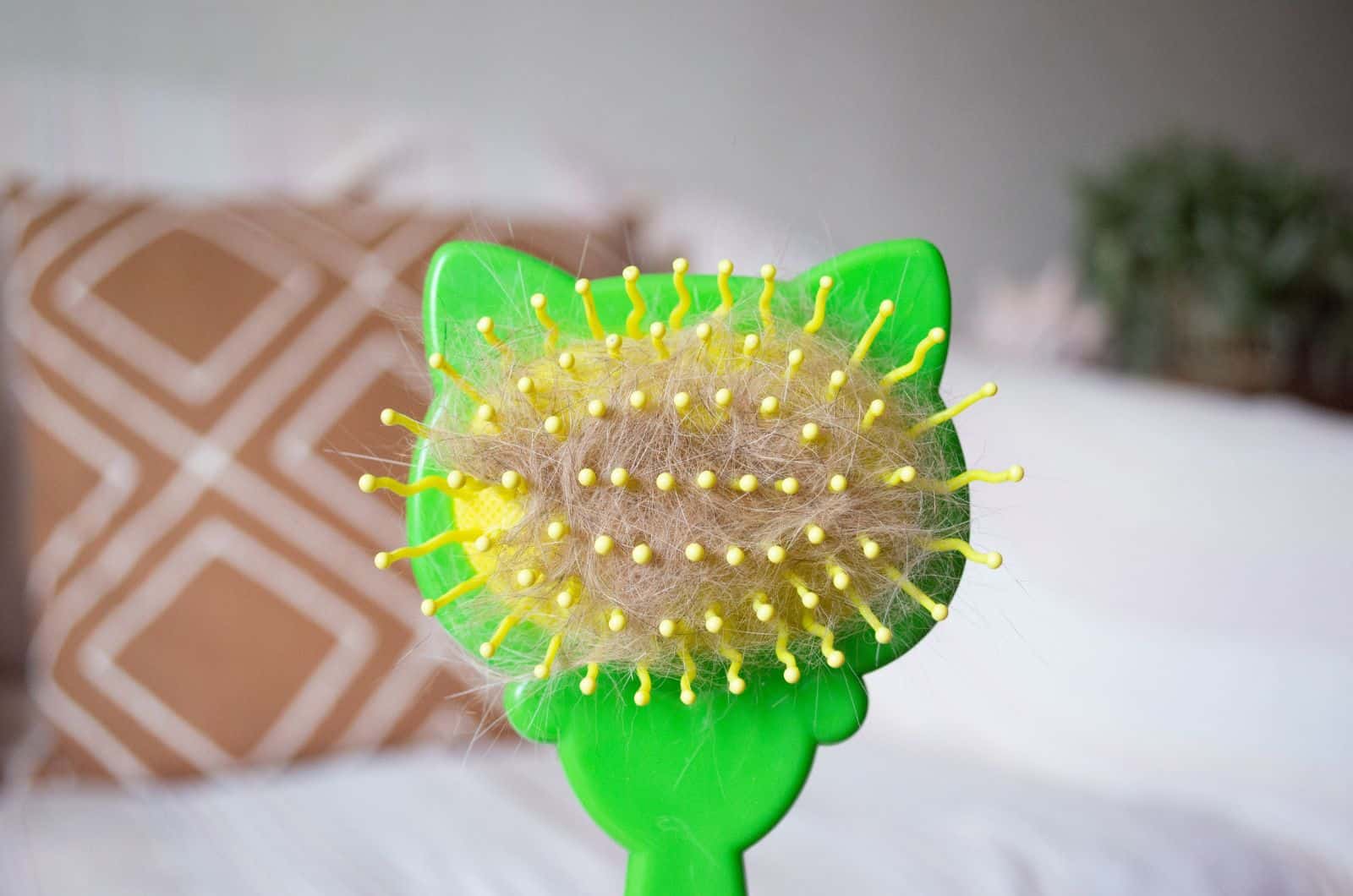
Now that we’ve gone over the causes of lumpy fur, as well as how lumpy fur can be painful for your cat, let’s go over how to remove the lumps from your cat’s fur.
1. Use A De-Matting Brush
De-matting cat hair brushes are a life-saver for removing lumps in your cat’s fur. Make sure to use them gently not to cause your cat any more discomfort and pain.
If your cat’s fur is not severely matted, I’m sure you’ll be able to get rid of the lumps using de-matting brushes. However, if you cannot do so, you should go to a professional groomer.
2. Go To A Groomer
It’s recommended to make an appointment with a skilled groomer to remove extremely matted cat hair.
The groomer will examine your cat’s hair and recommend what can be done if the fur is severely matted. The groomer will probably use electric clippers to comb or shave the mats.
To treat any possible skin irritation and inflammation, your cat could need veterinarian attention if the matting is hurting its skin.
3. Going To The Vet Is A Long-Term Solution
You need to visit the vet if there is no apparent cause for why your cat has stopped grooming. Hopefully, they will be able to find the underlying health issue causing the lack of self-grooming.
After examining your cat and discussing its medical history, your veterinarian can suggest the required tests. Most cats require a thyroid check, CBC, blood chemistry panel, and urinalysis.
It’s possible to incorporate viral testing for the immunodeficiency virus and feline leukemia. Radiographs are also highly useful for detecting chest and abdominal abnormalities and bone problems.
After identifying the underlying health issue, your vet will guide you through the treatment process.
6 Ways To Prevent Your Cat’s Fur From Getting Lumpy
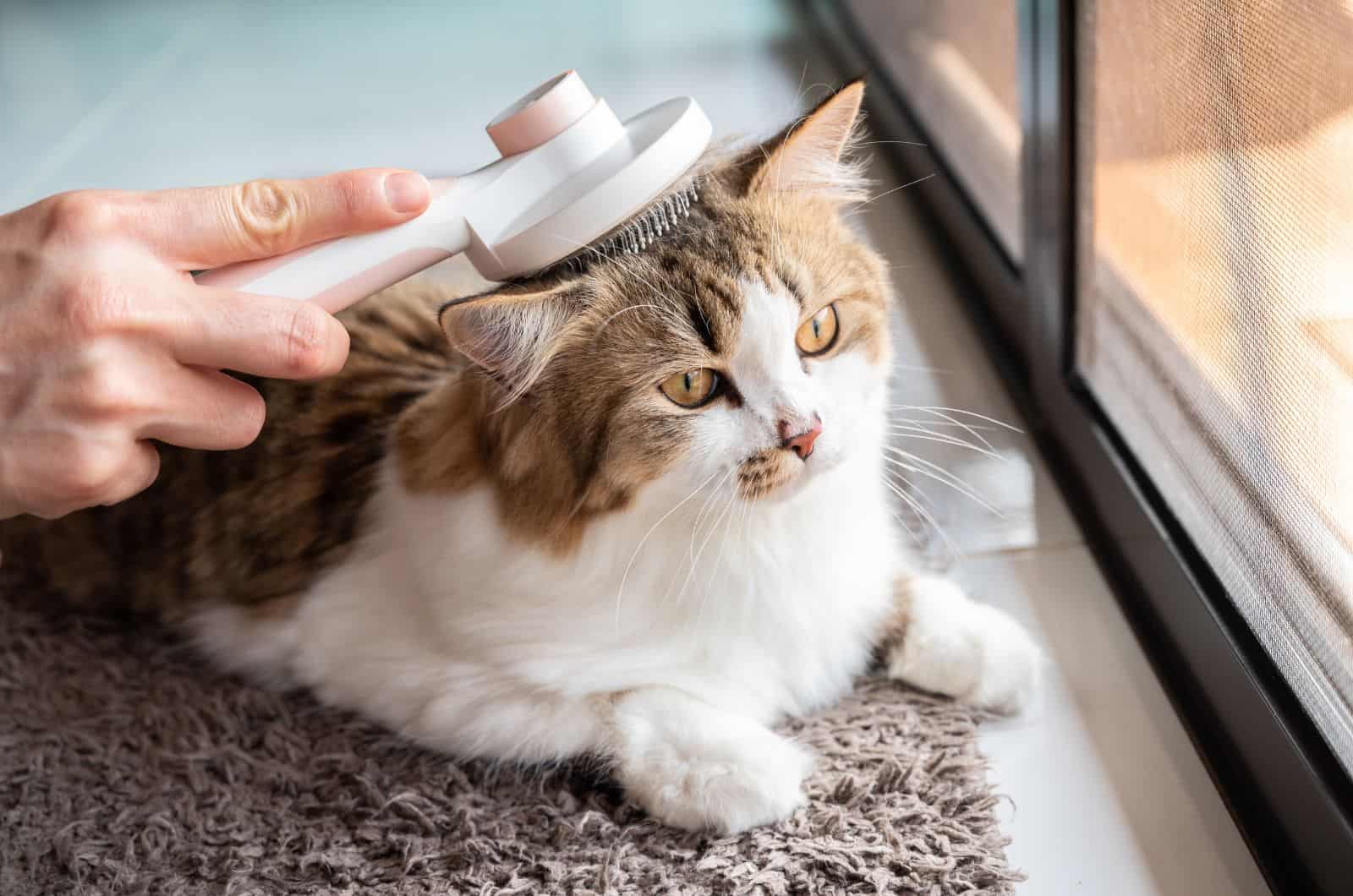
As we all know, it’s better to prevent the problem from arising than it is to have to treat the problem. Therefore, you should dedicate a little time to prevent your cat’s fur from becoming lumpy. Luckily, that’s not so hard to do, and it will not take up much of your time!
1. Inspect Your Cat’s Coat Daily
Keep an eye on your cat’s coat and inspect it regularly. If you want to avoid mats and knots, rub your fingers through your cat’s hair behind the ears, on the belly, and at the back of the head.
Pay special attention to those trouble spots to keep the hair smooth and untangled, as they’re most likely to develop tangles and mats.
Once a day at the very least, give your cat a “fur smoothness inspection”, where you will check for any tangles, knots, and lumps that may have formed. This will prevent the lumps from becoming large mats that must be shaved off.
2. Weekly Brushing
Checking your cat’s fur for knots should be done at least once a week. However, it’s better to do it twice a week, especially if your cat is longhaired.
Despite the greatest grooming efforts, a longhaired cat can develop mats at any time, mainly when it sheds its coat each year. Even short-haired cats can form clumps and mats.
Tiny knots and regions where dead hair has gathered can easily be removed using a brush or comb.
Use a soft-bristled brush and brush only lightly. You can also carefully clip knots with scissors (move slowly, as it’s easy to cut skin, especially if the mat is close to the skin).
Early detection of knots will save them from growing into full mats, which are more challenging to remove.
Related: 10 Best Brushes For Long Hair Cats + Buying Guide
3. Healthy Diet
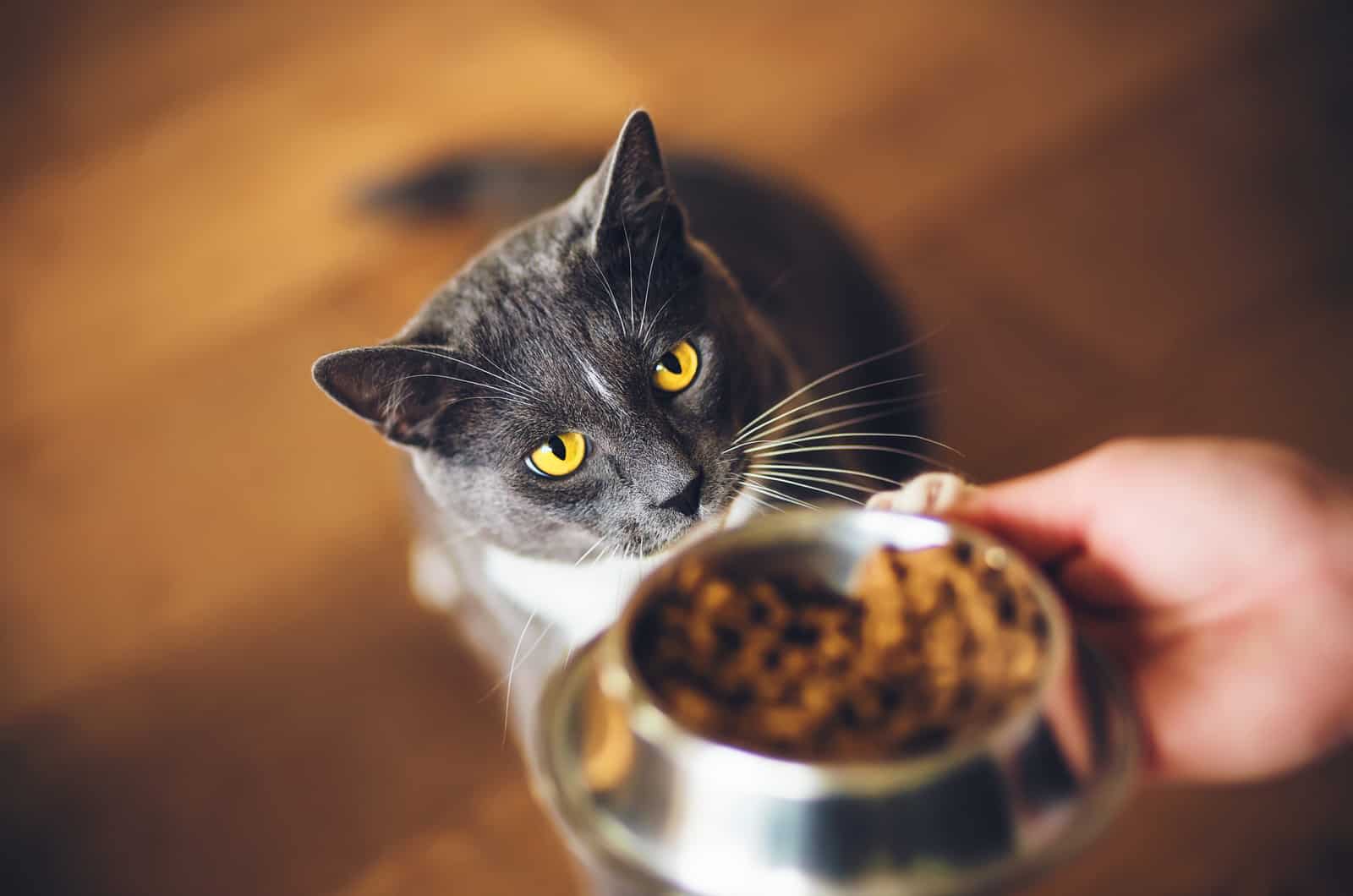
Cats are carnivorous creatures. Hence, most of their protein comes from meat, fish, and other animal byproducts.
Your cat’s skin and coat need essential fatty acids to stay healthy.
Lack of the so-called omega-3 fatty acids can result in a variety of disorders in the neurological system, from eyesight issues to reduced cognitive function. It has been demonstrated that omega-6 fatty acids have significant physiological impacts on the body.
Make sure your cat eats very few carbohydrates, as they’re not the primary energy source for cats, and cats don’t need them as a major part of their diet. A diet rich in carbohydrates often leads to weight gain in cats; therefore, make sure your cat’s intake of carbs is minimal.
If you know your cat has some deficiency, such as vitamin deficiency, invest in supplements that will replenish your cat’s source of whatever is deficient.
4. Professional Grooming Sessions
Brushing or combing, bathing, clipping claws, and cleaning the eyes and ears are all parts of a thorough grooming routine. I advise getting some grooming tips from a qualified groomer if you doubt your skills.
Your cat may only require professional grooming services around four times a year if you provide regular home care, including brushing and maintenance.
Matted or tangled fur, especially in longhaired cats, is among the most frequent reasons for having a professional groomer.
However, other situations can also call for professional help, such as if your cat has a temper or you’re just not confident in your grooming abilities.
5. Use Degreasing Shampoo
Whatever the cause, bathing your cat’s coat can assist if there is too much oil there. These shampoos can also reduce dandruff by restoring a normal rate of skin cell renewal.
You might be told to wash your cat once a week, twice a week, or every other week, depending on the severity of the issue.
If you cannot bathe your cat at home, seek expert assistance. To feel at ease during a bath, some cats require a sedative, and the best way to accomplish that is under close vet supervision.
6. Make Sure Your Cat Is Healthy
In this article, I’ve talked about how a lumpy coat can be a sign of an underlying disease that causes your cat not to want to self-groom. Therefore, one of the ways to prevent a lumpy coat is to prevent your cat from becoming sick.
Although many factors influence your cat’s health, you can do your fair share and ensure a clean litter box, enough nutritious food, and access to plenty of fresh water, which are all necessities for your cat.
Make sure not to overfeed a cat because being overweight is one of the health problems veterinarians see most frequently in cats and is one of the reasons why cats develop lumps – they cannot reach some areas of their fur!
Cats also need a yearly check-up with a veterinarian, flea and worm treatment, and a proper immunization schedule.
In Conclusion
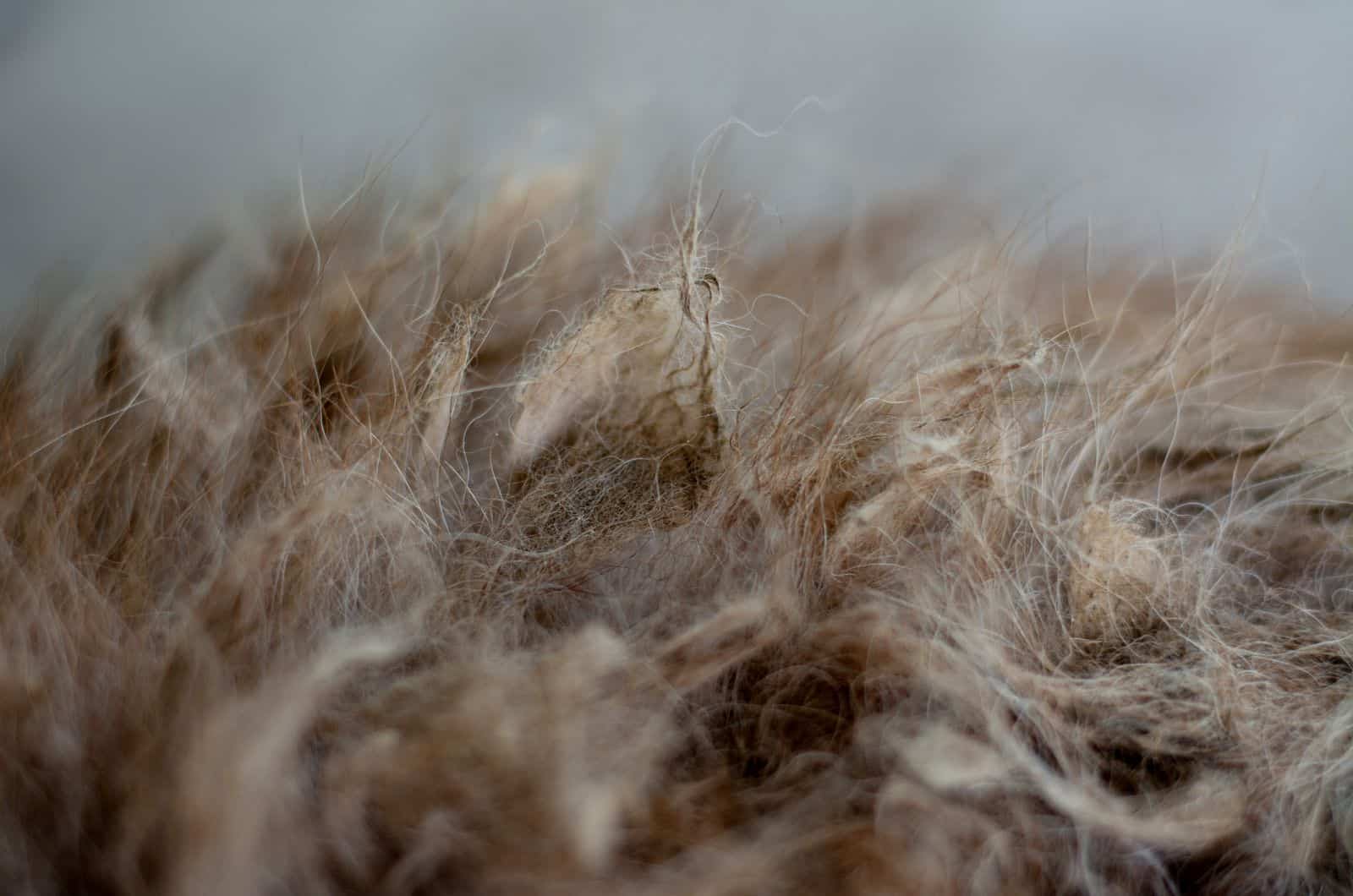
Why has my cat’s fur gone lumpy? The answer is simple – it’s due to the lack of self-grooming, which every cat should do daily. When carried daily, the formation of lumps is avoided. Then we get to the question, Why has my cat stopped self-grooming?
Dental pain, obesity, arthritis, depression, fur tasting bad due to flea medication, fungal infection, bad diet, cognitive dysfunction, internal disease, seborrhea, hyperthyroidism, and parasitic infection are all potential causes of your cat’s lack of desire for self-grooming.
Getting rid of the lumps in your cat’s fur is easy, but it’s more important to find the underlying cause of the lack of self-grooming, as lumps are only a sign of an underlying health issue. However, I’m sure your kitty will be perfectly fine; just go for a quick trip to the vet!
Related Articles:
Sphynx Cat’s Hair Does It Exist Or Not? What’s The Truth?


